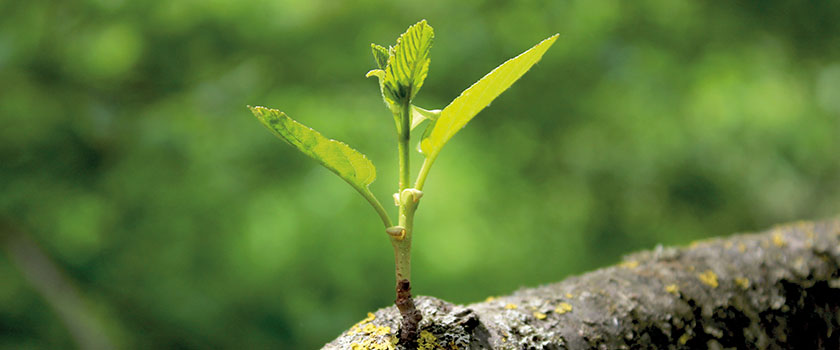Börsen-Zeitung (07.02.2022) - Climate-neutrality is all very well, but it has to go hand in hand with ‘nature-positivity’, says UBP’s impact investing expert Victoria Leggett.
In the field of sustainability investments, much revolves around climate protection, carbon-neutrality and renewable energies. But ESG also includes the environment and nature, which until now have played a subordinate role as an investment theme. Victoria Leggett from the Swiss private bank UBP manages one of the few biodiversity funds, launched at the end of 2021. She believes the topic will soon be just as much of a focus as climate change.
Biodiversity as a dedicated investment theme is comparatively new in fund management. Aren't topics such as the protection and promotion of ecosystems, natural habitats and biodiversity a very narrow focus for a fund?
For us, biodiversity is about nature and the variety of life on earth, which is the starting point for approaching the topic. We have the conviction that the focus on biodiversity will increase, as it is a strong trend. Of course, the investment universe is smaller than with a broad ESG approach, but we have found sufficient opportunities and we are confident that we can invest in this segment in a diversified way. Our focus is on protecting and restoring biodiversity. This overlaps to some extent with environmental funds.
What do you mean by “diversified” in this narrow segment?
Sufficiently broad but concentrated. The portfolio is made up of 45 to 55 companies active in the areas of sustainable management of natural resources, green cities & urban spaces, and sustainable food production, among others. The aim is to promote a “nature-positive” approach to economic development.
Where are the main challenges?
One important sector is chemicals, whose impact is critical for biodiversity. Here we are looking for more nature-friendly solutions. If, for example, various problems in the agricultural sector were addressed, such as the issue of pesticides, then the sector’s biodiversity footprint would be reduced.
In which sectors do you find solutions and how does the approach differ from conventional ESG portfolios?
Basically, any company can have a place in an ESG universe in the sense of a best-in-class approach – of course, there are exclusions in traditional ESG funds, where tobacco stocks are banned, for example. For our fund it’s different, because just being a company with the best ESG ratings does not necessarily mean it can play a role in the context of biodiversity.
Again on sectors, can you break that down?
There is no typical pattern. There are sectors with high levels of innovation, for example industrials, where there is a lot of technological innovation, where we are overweight. There is also a place for financials, as long as they finance the shift towards protecting nature and promote biodiversity. Not surprisingly, we are hardly active in the oil and gas sectors.
Which biodiversity companies are we talking about specifically?
The US water purification company Evoqua has a unique business model in the treatment of residential and industrial wastewater. The cleaner the water, the better for biodiversity. Such a company enables many industrial companies to reduce their environmental footprints. And then there’s Sims Metal, an Australian company that deals with metal recycling including electronic scrap. The huge amount of waste from small electronic appliances would be a burden on nature without recycling.
How does your collaboration with Cambridge Conservation Initiative and Peace Parks Foundation work? What influence do these organisations have?
We take their views and opinions very seriously, but ultimately we are the fund managers and make the decisions. Nevertheless, their input is immensely valuable, from consulting on important conservation-related topics to providing advice on the most relevant KPIs for companies in the different verticals. Our oversight structure lends a large degree of credibility to the platform, so we are particularly pleased to be working with such well-regarded conservation partners. We also invest 25% of our management fee in the two organisations.
How does a portfolio manager measure biodiversity?
In the field of biodiversity, there are currently no clearly defined metrics, and measurement is often a problem. This is different with the climate change theme where the world has coalesced around one metric: carbon. But it is clear that carbon-neutrality and biodiversity are closely related. The industry has not yet internalised this view. Our approach is to talk and engage intensively with companies.
So do you get the data you need from the companies directly?
That would be nice, but engagement is not a quick shortcut on the way to data collection. It's about building long-term relationships with companies and encouraging them to move forward along the biodiversity curve.
How helpful are broad-ranging ESG ratings in the area of biodiversity?
We use them, but very cautiously. They’re not really a solution to the data and information problem in biodiversity and impact investing. ESG ratings can also distort the true picture because they favour big companies that have better disclosure capabilities. Among small and mid-caps there are a lot of gaps, and those are precisely the kinds of companies that are of interest. In the small and mid-cap universe, you often find companies with very interesting products and solutions but fewer resources for disclosing the information required by ESG rating agencies. Where possible, we try to support such hidden gems and actively help them achieve best practice on disclosure and sustainability reporting.
You say that more than half of global economic output is dependent on nature. Isn't that an exaggeration?
Many sectors have a direct and indirect connection to nature. If you add it all up, you come to that conclusion. We all have to get used to the buzzword “nature-positive”. The industry is five years behind on biodiversity compared to climate change. Hopefully it will catch up, because now we are entering the UN decade of ecosystem restoration, which is about interaction between climate protection and biodiversity restoration.
What does that entail for sustainability investment?
It is time to broaden the focus of investments from climate-neutral to nature-positive. The momentum is enormous and is being promoted by global initiatives such as the UN’s COP15. The accompanying regulations and investments are likely to expand the investment universe and ultimately the opportunities for superior investment returns.

Victoria Leggett
Head of Impact & Portfolio Manager
Voir Profil linkedin








